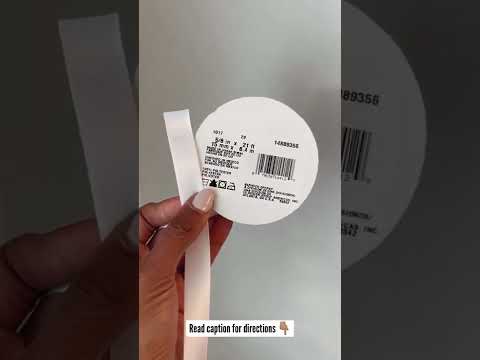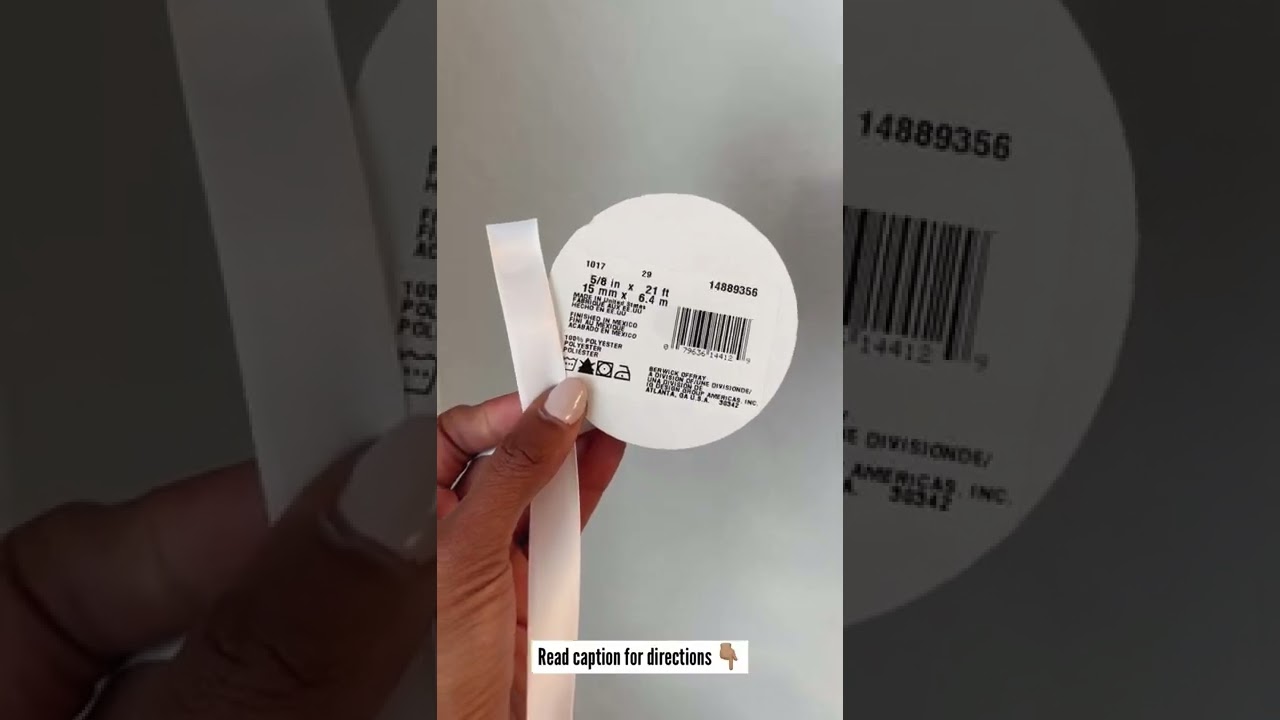Fabric labels for handmade items are the perfect way to add a touch of professionalism and authenticity to your creations. Whether you’re a passionate crafter or a small business owner, these labels are essential for showcasing the quality and uniqueness of your handmade products. Made with care and attention to detail, these labels not only provide important information such as fabric composition and care instructions, but they also add a special personalized touch to your items. Imagine the delight on your customers’ faces when they see a beautifully crafted label attached to their purchase, highlighting the love and dedication you put into making it. These fabric labels are not just practical, they also serve as a powerful marketing tool, helping to build your brand and create customer loyalty. With a wide range of designs, colors, and sizes available, you can easily find the perfect label to complement your unique style and aesthetic. So, whether you’re sewing garments, knitting accessories, or creating handmade gifts, don’t underestimate the impact of these labels in enhancing the overall presentation and value of your products. Invest in fabric labels today and let your handmade creations speak for themselves.

Fabric Labels for Handmade Items: A Guide to Quality and Compliance
When it comes to selling handmade items, whether it be clothing, accessories, or home decor, having high-quality fabric labels is of utmost importance. Not only do these labels add a professional touch to your creations, but they also serve as an essential tool for providing important information to your customers. In this article, we will explore the significance of fabric labels for handmade items, their legal requirements, and how to design and attach them properly.
1. The Importance of Fabric Labels
Fabric labels play a crucial role in communicating vital information about your handmade items to your customers. They provide details about the fabric composition, care instructions, sizing, and even your brand identity. By including fabric labels, you are ensuring that your customers have all the necessary information to care for and maintain your products, which can enhance customer satisfaction and build trust in your brand.
2. Legal Requirements for Fabric Labels
When selling handmade items, it is essential to comply with legal requirements for fabric labels. These requirements may vary depending on your location, but some common information that should be included on fabric labels includes:
- Fiber Content: Clearly state the fabric composition, including percentages of different fibers used.
- Care Instructions: Provide detailed guidelines on how to properly clean and care for the item.
- Country of Origin: Disclose the country where the item was made.
- Manufacturer Information: Include your business name, address, and contact information.
It is important to research the specific legal requirements for fabric labels in your area to ensure compliance and avoid any potential legal issues. Remember that these requirements are in place to protect consumers and provide them with accurate information about the products they purchase.
3. Designing Fabric Labels
The design of your fabric labels should align with your brand identity and complement your handmade items. Here are some tips for creating visually appealing and informative fabric labels:
- Choose the Right Fabric: Select a durable fabric that can withstand washing and won’t fray easily.
- Include Your Logo: Incorporate your logo or brand name to enhance brand recognition.
- Use Clear and Legible Fonts: Opt for fonts that are easy to read, even when the label is small.
- Consider Colors: Use colors that resonate with your brand and complement the overall aesthetics of your items.
Remember that simplicity is key when it comes to fabric label design. Avoid cluttering the label with unnecessary information or excessive graphics that might distract from the essential details.
4. Attaching Fabric Labels
Properly attaching fabric labels ensures that they remain securely in place throughout the lifetime of your handmade items. Here are some methods you can consider:
- Sewing: Sewing the fabric label onto the item is a popular and reliable method. Ensure that the stitches are secure and hidden within the seam or hem.
- Fusing: If you are working with fabrics that can withstand heat, using an iron-on adhesive can be a convenient way to attach fabric labels.
- Hang Tags: Alternatively, you can use hang tags with strings or ribbons to attach fabric labels. This method works well for items that don’t have a seam or hem suitable for sewing.
Choose the attachment method that best suits your handmade items and ensures that the fabric labels remain visible and intact.
5. Branding Opportunities
Fabric labels offer excellent branding opportunities for your handmade items. They serve as a constant reminder of your brand and can help customers identify your products in the future. Consider adding a unique touch to your labels such as custom artwork, special stitching, or even personalized messages to further enhance your brand identity.
In conclusion, fabric labels are indispensable for handmade items. They not only provide essential information to customers but also contribute to a professional and trustworthy image. By understanding the legal requirements, designing eye-catching labels, and attaching them securely, you can elevate your brand and ensure customer satisfaction.
Hacks for Stylish DIY Clothing Labels: Boost Your Handmade Business
Fabric Labels for Handmade Items
Fabric Labels for Handmade Items
| Label Type | Material | Usage |
|---|---|---|
| Woven Labels | Satin, Damask, Taffeta | Preferred for clothing and accessories as they provide a professional touch and durability. |
| Printed Labels | Satin, Cotton, Polyester | Offer versatility in design and can be personalized with brand logos or care instructions. |
| Hang Tags | Kraft paper, Recycled cardboard | Perfect for showcasing additional information like pricing, branding, or promoting sustainable practices. |
| Leather Labels | Genuine leather, Faux leather | Add a luxurious and premium feel, commonly used for high-end products or leather goods. |
| Rubber Labels | Silicone, PVC | Provide a modern and unique appearance, often used to showcase logos or add texture to the label. |
Fabric labels for handmade items play a vital role in enhancing the overall quality and appeal of the product. Choosing the right type of label is essential to convey important information and leave a lasting impression on customers. The table above highlights various fabric label types, their suitable materials, and their most common applications.
Woven labels, crafted from materials like satin, damask, or taffeta, are highly preferred for clothing and accessories. They not only provide a professional touch but also offer durability, ensuring that your label remains intact even after multiple washes or heavy use.
Printed labels, made from satin, cotton, or polyester, offer versatility in design. These labels can be customized with brand logos, care instructions, or any other relevant information. The ability to personalize printed labels allows artisans to create a unique and distinctive identity for their handmade items.
Hang tags have gained popularity as an alternative to traditional fabric labels. Made from materials like kraft paper or recycled cardboard, hang tags provide a platform for showcasing additional information such as pricing, branding, or promoting sustainable practices. They offer a creative way to engage with customers and add an extra element of visual appeal to your handmade products.
For a touch of luxury, leather labels are an excellent choice. Crafted from genuine leather or faux leather, these labels add a premium feel to high-end products or leather goods. Leather labels are often embossed or debossed with logos or brand names, elevating the overall perception of the item.
For those seeking a modern and unique appearance, rubber labels are an exciting option. Made from materials like silicone or PVC, these labels can showcase intricate logos or add texture to the label itself. Rubber labels are particularly popular in industries such as outdoor gear or sportswear, where durability and style go hand in hand.
Remember, choosing the right fabric label is crucial to reflect the quality, personality, and craftsmanship of your handmade items. Consider the materials, design possibilities, and desired aesthetic appeal to make an informed decision that enhances your product’s overall value.

